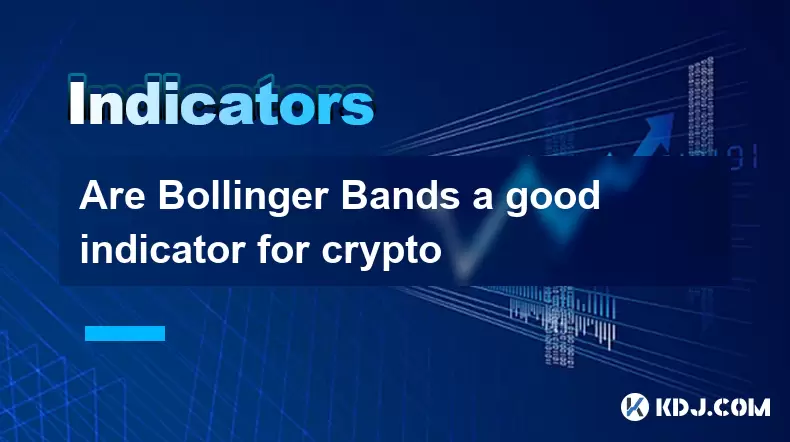-
 Bitcoin
Bitcoin $117,462.8204
-2.03% -
 Ethereum
Ethereum $3,061.1595
1.10% -
 XRP
XRP $2.9139
-2.19% -
 Tether USDt
Tether USDt $1.0002
0.02% -
 BNB
BNB $685.1357
-1.24% -
 Solana
Solana $161.3803
-2.11% -
 USDC
USDC $1.0002
0.04% -
 Dogecoin
Dogecoin $0.1948
-2.92% -
 TRON
TRON $0.2987
-0.89% -
 Cardano
Cardano $0.7330
-1.27% -
 Hyperliquid
Hyperliquid $47.7888
0.13% -
 Stellar
Stellar $0.4514
-2.93% -
 Sui
Sui $4.0169
2.74% -
 Chainlink
Chainlink $15.7088
-2.57% -
 Hedera
Hedera $0.2356
-3.33% -
 Bitcoin Cash
Bitcoin Cash $488.6656
-3.61% -
 Avalanche
Avalanche $21.2955
-1.47% -
 UNUS SED LEO
UNUS SED LEO $9.0415
0.42% -
 Shiba Inu
Shiba Inu $0.0...01332
-0.82% -
 Toncoin
Toncoin $3.0124
-0.62% -
 Litecoin
Litecoin $94.2175
-2.07% -
 Polkadot
Polkadot $4.0011
-0.61% -
 Monero
Monero $333.5714
-3.46% -
 Uniswap
Uniswap $9.1114
-1.56% -
 Dai
Dai $1.0000
0.02% -
 Ethena USDe
Ethena USDe $1.0005
0.00% -
 Bitget Token
Bitget Token $4.4951
1.87% -
 Pepe
Pepe $0.0...01242
0.47% -
 Aave
Aave $321.9943
0.51% -
 Bittensor
Bittensor $434.1984
5.13%
Are Bollinger Bands a good indicator for crypto
Bollinger Bands help crypto traders identify volatility, overbought/oversold levels, and potential breakouts, but work best when combined with other indicators like RSI or MACD for more accurate trading decisions.
Jul 12, 2025 at 12:00 am

What Are Bollinger Bands?
Bollinger Bands are a technical analysis tool developed by John Bollinger in the early 1980s, widely used across financial markets, including cryptocurrency trading. The indicator consists of three lines: a simple moving average (SMA), typically set at 20 periods, and two standard deviation bands plotted above and below the SMA. These bands dynamically adjust to price volatility, expanding when market fluctuations increase and contracting during calmer periods.
In the context of crypto trading, where prices can experience rapid swings due to news events, regulatory updates, or macroeconomic factors, Bollinger Bands help traders visualize potential overbought or oversold conditions. When the price touches or exceeds the upper band, it may signal that the asset is overbought; conversely, touching or falling below the lower band could suggest an oversold condition.
How Do Bollinger Bands Work in Crypto Markets?
The core function of Bollinger Bands is to measure price volatility, which makes them particularly relevant for cryptocurrencies like Bitcoin, Ethereum, and altcoins known for their high volatility. In highly volatile environments, the bands widen, indicating increased uncertainty or momentum. During consolidation phases, the bands narrow, suggesting reduced activity and potential breakout scenarios.
One key feature traders look for is the "squeeze," which occurs when the bands contract tightly around the price. A squeeze often precedes a significant price move, although it doesn't indicate direction—only the likelihood of a breakout. This can be especially useful in low-volume or sideways-moving crypto markets, where identifying breakout points is crucial for timing entries or exits.
Can Bollinger Bands Be Used as Standalone Indicators?
While Bollinger Bands offer valuable insights into price behavior, they should not be used in isolation. Relying solely on this indicator can lead to false signals, especially in unpredictable crypto markets. For example, an asset may remain overbought or oversold for extended periods during strong trends, misleading traders who expect a reversal just because the price has touched one of the bands.
To enhance accuracy, traders often combine Bollinger Bands with other tools such as RSI (Relative Strength Index), MACD (Moving Average Convergence Divergence), or volume indicators. These combinations help confirm whether a price movement near the bands is likely to result in a reversal or continuation.
How to Interpret Price Action Near the Bands
Understanding how price interacts with the bands is essential for effective use:
- Price touching the upper band: Could indicate strength, but also possible overextension. Traders may look for bearish candlestick patterns or divergence in momentum indicators before considering short positions.
- Price touching the lower band: May reflect weakness or capitulation. However, it could also present buying opportunities if supported by bullish chart patterns or increasing volume.
- Price hugging one band for prolonged periods: Often suggests a strong trend. A sudden move back toward the middle band might signal a potential pause or reversal.
It's important to note that no single touchpoint guarantees a reversal or continuation. Context matters significantly, including overall trend, volume, and broader market sentiment.
Common Mistakes Traders Make With Bollinger Bands in Crypto Trading
Many novice traders fall into traps when using Bollinger Bands without fully understanding their mechanics:
- Assuming every touch of the upper/lower band is a trade signal: This leads to premature entries and losses, especially during trending markets.
- Ignoring timeframes: Using Bollinger Bands on smaller timeframes like 5-minute charts without confirming with higher timeframes (e.g., 1-hour or daily) can generate misleading data.
- Failing to adjust settings: The default setting of 20-period SMA and 2 standard deviations works well in many cases, but some traders tweak these values based on specific assets or strategies. However, arbitrary changes without backtesting can reduce effectiveness.
Proper usage involves testing strategies against historical data and being aware of current market conditions before acting on any signals generated by Bollinger Bands.
Practical Steps to Use Bollinger Bands in Crypto Trading
Here’s a step-by-step guide to integrating Bollinger Bands into your crypto trading strategy:
- Select the appropriate timeframe: Choose a timeframe that aligns with your trading style—day traders may opt for 15-minute or 1-hour charts, while swing traders might prefer daily or weekly charts.
- Apply the Bollinger Bands indicator: Most trading platforms like TradingView, Binance, or MetaTrader allow easy integration of this indicator. Set the period to 20 and standard deviation to 2 unless you have tested alternative settings.
- Identify squeezes visually: Look for narrowing bands, which suggest decreasing volatility and the potential for a future breakout.
- Watch for breakouts after a squeeze: Once the bands begin to expand again, observe the direction of the breakout to determine entry points.
- Confirm with other indicators: Use RSI to check for overbought/oversold levels or MACD for trend confirmation. Volume spikes can further validate the strength of a move.
- Set stop-loss and take-profit levels: Based on the distance between the bands and recent price action, define risk-reward ratios to manage trades effectively.
Following these steps ensures that Bollinger Bands serve as part of a comprehensive trading plan rather than a standalone decision-making tool.
Frequently Asked Questions
Q: Can Bollinger Bands predict exact price reversals in crypto?
A: No, Bollinger Bands do not guarantee precise reversal points. They highlight areas where price may reverse, but confirmation from other indicators or chart patterns is necessary.
Q: Should I always trade when the price touches the upper or lower band?
A: Not necessarily. Touching the bands alone isn't enough to justify a trade. Always assess the trend, volume, and other technical factors before making decisions.
Q: How do I know if a breakout after a Bollinger Band squeeze is valid?
A: A valid breakout usually comes with increased volume and follows through in the breakout direction. False breakouts tend to quickly revert back within the previous range.
Q: Can I use Bollinger Bands for all types of cryptocurrencies?
A: Yes, they can be applied to any crypto asset. However, results may vary depending on the asset's liquidity, volatility, and overall market behavior.
Disclaimer:info@kdj.com
The information provided is not trading advice. kdj.com does not assume any responsibility for any investments made based on the information provided in this article. Cryptocurrencies are highly volatile and it is highly recommended that you invest with caution after thorough research!
If you believe that the content used on this website infringes your copyright, please contact us immediately (info@kdj.com) and we will delete it promptly.
- PENGU Token, Pudgy Penguins, and Supply Inc.: A NYC Take on the Hottest Collab
- 2025-07-16 03:50:12
- Crypto Bull Run: Riding the Wave to Maximize Gains
- 2025-07-16 02:50:12
- Lightchain AI Bonus Round: Last Chance for Early Access?
- 2025-07-16 02:30:12
- Payroll Revolution: How Stablecoins are Reshaping Salaries in the Crypto Age
- 2025-07-16 02:30:12
- BlockDAG, X1 App, CRO Price: Decoding the Hype and the Hope
- 2025-07-16 01:20:12
- Trump, Cryptocurrencies, and Remarks: A Wild Ride in the Crypto World
- 2025-07-16 01:35:12
Related knowledge

Advanced RSI strategies for crypto
Jul 13,2025 at 11:01am
Understanding the Basics of RSI in Cryptocurrency TradingThe Relative Strength Index (RSI) is a momentum oscillator used to measure the speed and chan...

Crypto RSI for day trading
Jul 12,2025 at 11:14am
Understanding RSI in the Context of Cryptocurrency TradingThe Relative Strength Index (RSI) is a momentum oscillator used to measure the speed and cha...

Crypto RSI for scalping
Jul 12,2025 at 11:00pm
Understanding RSI in the Context of Crypto TradingThe Relative Strength Index (RSI) is a momentum oscillator widely used by traders to measure the spe...

What does an RSI of 30 mean in crypto
Jul 15,2025 at 07:07pm
Understanding RSI in Cryptocurrency TradingRelative Strength Index (RSI) is a momentum oscillator widely used in cryptocurrency trading to measure the...

What does an RSI of 70 mean in crypto
Jul 13,2025 at 06:07pm
Understanding the RSI Indicator in Cryptocurrency TradingThe Relative Strength Index (RSI) is a widely used technical analysis tool that helps traders...

How to avoid RSI false signals in crypto
Jul 13,2025 at 06:21pm
Understanding RSI and Its Role in Crypto TradingThe Relative Strength Index (RSI) is a momentum oscillator used to measure the speed and change of pri...

Advanced RSI strategies for crypto
Jul 13,2025 at 11:01am
Understanding the Basics of RSI in Cryptocurrency TradingThe Relative Strength Index (RSI) is a momentum oscillator used to measure the speed and chan...

Crypto RSI for day trading
Jul 12,2025 at 11:14am
Understanding RSI in the Context of Cryptocurrency TradingThe Relative Strength Index (RSI) is a momentum oscillator used to measure the speed and cha...

Crypto RSI for scalping
Jul 12,2025 at 11:00pm
Understanding RSI in the Context of Crypto TradingThe Relative Strength Index (RSI) is a momentum oscillator widely used by traders to measure the spe...

What does an RSI of 30 mean in crypto
Jul 15,2025 at 07:07pm
Understanding RSI in Cryptocurrency TradingRelative Strength Index (RSI) is a momentum oscillator widely used in cryptocurrency trading to measure the...

What does an RSI of 70 mean in crypto
Jul 13,2025 at 06:07pm
Understanding the RSI Indicator in Cryptocurrency TradingThe Relative Strength Index (RSI) is a widely used technical analysis tool that helps traders...

How to avoid RSI false signals in crypto
Jul 13,2025 at 06:21pm
Understanding RSI and Its Role in Crypto TradingThe Relative Strength Index (RSI) is a momentum oscillator used to measure the speed and change of pri...
See all articles

























































































